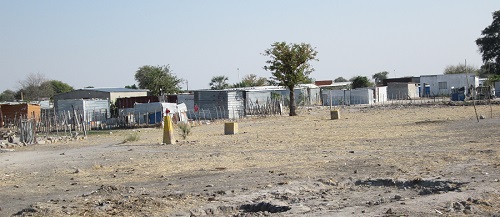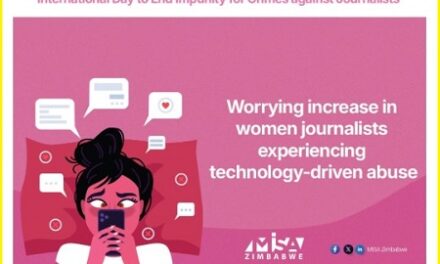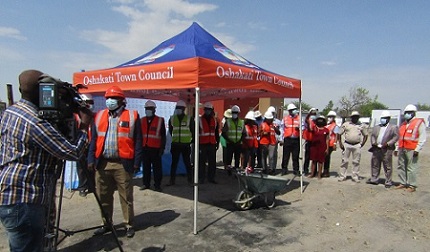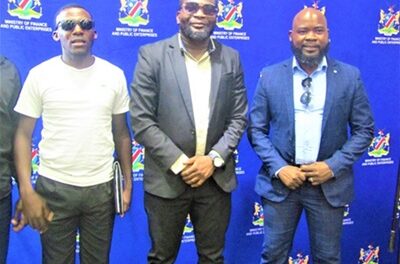
By Martin Negumbo /
In Oshana Region, along the main road from Ondangwa to Oshakati, lies a town historically known for its character as a residential suburb for the wealthy individuals of northern Namibia.
This is Ongwediva.
Historically a sleepy town, that constantly came to life only when it was time for the then Ongwediva College of Education (now the University of Namibia Campus)’s yearly teacher graduations, Ongwediva is now one of the towns in northern Namibia which have grown fast over the last two decades.
Infrastructural developments, such as housing and institutional buildings are of the best. Businesses have also built themselves up, with several shopping malls which could match the standard of those one may find in Windhoek.
The biggest private hospital in the whole northern part of Namibia, the Medipark Private Hospital, is also found in Ongwediva.
Ongwediva is also a town which is host to two University of Namibia campuses, which are the Eduardo dos Santos Engineering Campus and the Hifikepunye Pohamba Education Campus.
The town is also the host of the International University of Management (IUM) Campus. The town is also host to the Institute of Open Learning (IoL) northern centre, as well as the Namibia College of Open Learning (NAMCOL) northern centre.
Which means that Ongwediva’s developmental strength comes from it educational bases.
Yet, Ongwediva, like most other towns of the north, also faces the acute situation of lack of housing for its residents, more so those at the bottom of the economic pyramid.
Omutumwa visits three informal settlements in Ongwediva, where people still live in housing structures made out of corrugated iron sheets or other makeshift building materials meant just to put a shaky roof over one’s head.
These locations, named Sky Phase 1, Sky Phase 2, and Sky Phase 3, consist of a mix of brick and mortar houses and corrugated iron sheet houses, commonly known as shacks (or oombashu, in the vernacular). Most of the brick houses in these locations are not of the quality and standard of the town. But the shacks are the dominating housing structures of the locations.
The majority of residents of these shacks have been resigned to the situation of their type of housing, and rather all they ask is for municipal services such as water and electricity and sanitation to be brought closer to their shacks.
Mr Jona Shilongo has a shack in Sky Phase 1. “I settled here, and been living in this shack of mine since the year 2013,” Shilongo says. “But until this day I don’t have water or electricity here at my home.”
Shilongo points out that he fetches water from one of his neighbours who has a tap in his yard.
While the neighbourhood is dominated by shacks, Shilongo also points out that some of the shacks are mini-shops which sell daily necessities.
In Sky Phase 2 Omutumwa meets Ms Lita Lili. Lili also expresses similar sentiments as Mr Shilongo.
However the one different thing that is visible around Ms Lili is that in her neighbourhood there are domestic pigs, chickens and goats, which are a source of income for their owners but also a source of unhygienic conditions in the neighbourhood.
“Unhygienic conditions are a source of sickness, but unhygienic conditions are not really our major concern,” says Ms Lili. “Among our major concerns is lack of electricity in the neighbourhood, especially at night it is scary to go outdoors.”
Also in Sky Phase 3 Mrs Loide Matias who lives in a one-bedroom shack with three grandchildren who are of school going age expresses the same sentiments as Ms Lili. The safety of her grandchildren is her major concern when it is dark.
Mrs Matias states that she hardly ever sees officials of the Ongwediva Town Coucil, “except when they come around to collect household garbage. But still they don’t do so as often as it is necessary.”
The public relations officer of Ongwediva Ms Lonia Nghuulikwa says that the town is growing fast on account of its growing population.
“And therefore the town has development plans which need financial resources for implementation,” Nghuulikwa states. “The town council has plans to improve the living conditions of residents who live in shacks in the town of Ongwediva.”
Water connections and electricity will be the two most important priorities for implementation early next year, Nghuulikwa says.
“For now the town is busy with preparations of the annual Ongwediva Trade Fair. The trade fair raises funds which go to the development budget of the town, money which is then used to develop infrastructures where necessity is observed.
“The trade fair usually attracts local and foreign investors. In the next five years the town of Ongwediva will be seen to have improved drastically the living conditions of all residents.”
Nghuulikwa cautions residents who live in shacks and other informal settlements to take their sanitation seriously in order to protect themselves from sicknesses spread by unhygienic conditions.
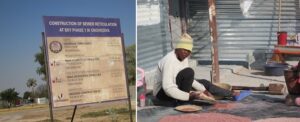
In the photos: Amidst the infrastructural growth of Ongwediva are informal settlements where the town’s residents who are at the bottom of the economic pyramid have found shelter. Despite Ongwediva Town Council’s efforts at bringing services to the people, Ms Lita Lili still lives in her shack in Sky Phase 2.

[NB. This article was produced with the financial support of the European Union. Its contents are the sole responsibility of Omutumwa and do not necessarily reflect the views of the European Union.]

